Most famous for his photographs capturing the attempted assassination of Ronald Reagan, Sebastião Salgado primarily works on long-term documentary projects portraying the plight of people living in desolate conditions across the world.
By focusing on extreme poverty, hunger, poor workers and migrants, Sebastião’s photographs are meant to shock their viewers.
Salgado presents, as Dr. Julian Stallabrass argues, “contemporary scenes which should have long been banished from the perfectible neoliberal state; to show in a supposedly post-industrial world, scenes of vast pre-industrial labour; in a time of ahistorical bliss, scenes of naked exploitation and oppression.”
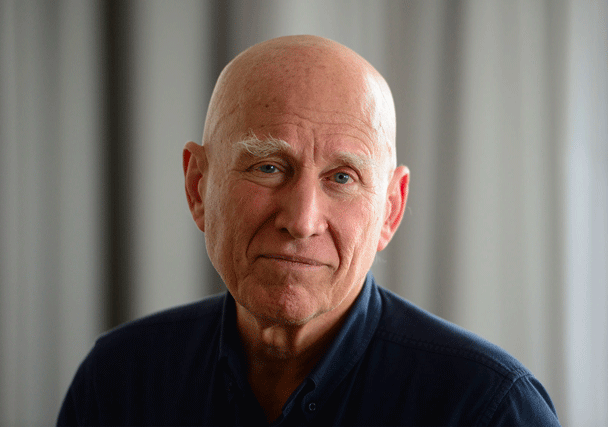
Born and raised to middle-class parents in rural Brazil, Salgado was educated as an economist and initially worked for the Ministry of Finance. He later moved to Paris in 1969 because of his involvement in the student struggle against the Brazilian military dictatorship. “I am an immigrant. [...] My work is the result of my training, my heritage, cultural and ideological and ethical,” says Salgado.
Salgado’s photographs align with the United Nations’ No Poverty, Decent Work and Economic Growth, and Reduced Inequalities Sustainable Development Goals.
Working as a photographer for over 30 years, Salgado’s photographs have mapped economic crises and various forms of human displacement persisting from the 20th into the 21st century, explicitly critiquing the skyrocketing income disparity.
Although many institutions, especially the United Nations, who set a target to eradicate extreme poverty by 2030 and “build the resilience of the poor and those in vulnerable situations,” are fighting for worker rights, Salgado’s photographs are proof that without systemic changes, these goals are near impossible to accomplish.
During the ongoing COVID-19 pandemic, the world’s billionaires saw a $10.2 trillion wealth increase. The International Monetary Fund is warning of an even worse global recession, inflation, and an unprecedented number of people falling below the poverty line.
This raises the question, who is being targeted by the recession, inflation and mass poverty?
Humanitarian aid is essential, but is often exploited by the governments “to conceal either the poverty or the ruthlessness of their policies. In Biafra, in Cyprus, in Angola, in Cambodia, in the Sahel, humanitarianism has been used to prolong war or to perpetuate man-made agonies.”
Salgado’s photographs are in black and white, but the lack of colour does not hide any details from the photographs. Salgado’s brilliant techniques to accentuate the texture of the scene give his photographs an extraordinary level of depth, even in the monotones of his photos.
The grandeur of landscape and people in his photos is unnerving. People either fade into the distance, visible only as part of the devastated environment. Or, a single person in the foreground captures the misery of the whole community.
Salgado spent weeks in a gold mine in Serra Pelada, Brazil in 1986. The Serra Pelada gold mine was active from 1980 to 1986, and currently exists as a highly polluted lake. Salgado took 28 photos of the workers and miners, capturing the expanse of horrid working conditions and suffering.
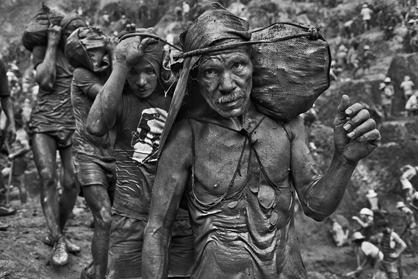
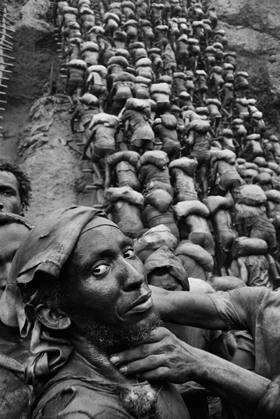
These workers made as many as 60 trips up and down the dangerous cliff, carrying heavy sacks that weighed between 30 and 60 kgs, and got paid only 60 cents for each of the trips.
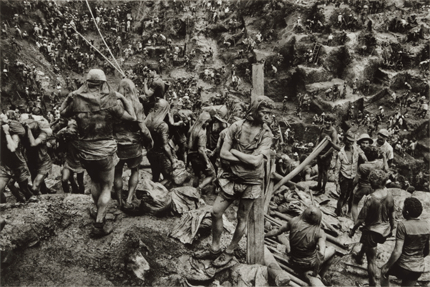
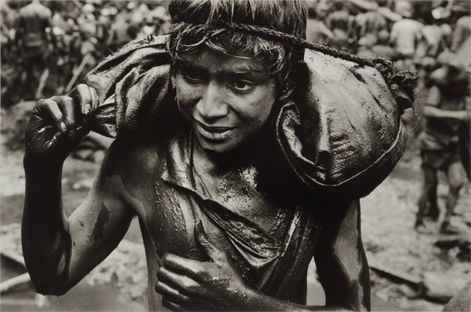
Salgado’s photographs provide an explicitly visible emphasis on structural issues of poverty. He opts for a series of photos that provoke a visceral emotion from the viewer, rather than aiming for a single shot that captures the intensity of a situation, like renowned photographer Steve McCurry.
“(F)inally, you photograph with [...] all of you. It depends on what you are. And that’s it. I come from an undeveloped country where the social problems are very strong. And so it’s inevitable that my photos reflect that,” explains Salgado.
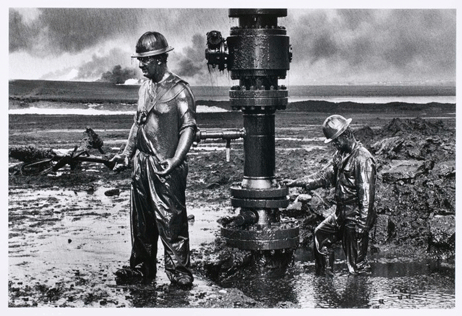
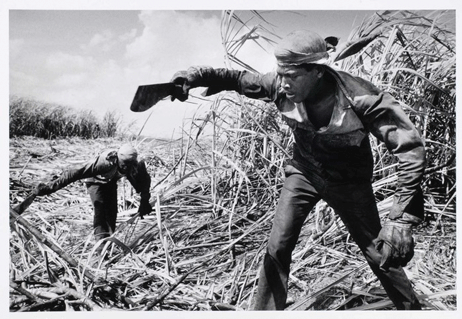
Salgado’s photos are reflective. They reflect the worsening conditions of communities that are neglected by the governments over the span of decades. The viewers reflect upon those conditions captured in the photographs, especially people outside those places who can only see the photographs and be shocked at the conditions of those poor workers and migrants.
“I felt a certain revulsion, and a compulsion to show that others also have dignity, that dignity is not an exclusive property of the rich countries of the north but exists all over the planet. That’s what photography was for me, my language, my life and my way of going about and doing things,” he says.
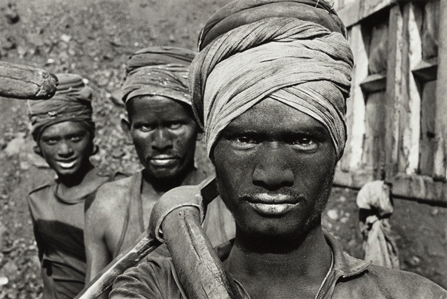
Although globally respected, Salgado’s photographs have been thoroughly criticized by journalists and academics alike. One of his critics is Dr. John Mraz.
“Everything is enveloped in an incomprehensible and inexplicable delitescence that makes enigmatic the hunger, poverty and death that appears (in Other Americas). Evidently, these social cancers are not the result of the area’s tremendous class differences, because these are not documented in the book’s photographs. Neither are they the product of living in overpopulated and dirty mega-cities that lack minimal services, for these ever-expanding slums do not appear either. The urban workers and their families that live and labour in the metropolises – and which today constitute the majority of the population – are absent in Salgado’s Other Americas. Rather, by aiming his camera at rural cultures, he asserted that these problems are simply part of the landscape,” argues Dr. Mraz.
Larry Rohter, while interviewing Salgado for The New York Times, asked Salgado his views on people’s critique of his work as an aestheticization of misery, and his photos as being “too pretty.”
Salgado replies, “It’s not my problem. I can’t do what I do in any other way. [...] When you write, you have your style, you have your form. Photographers are like that too, except that our language is a formal language, an aesthetic. [...] So I can’t do things any other way than my own. There are people who like that, people who don’t, people who critique. Fine. But that’s the problem of people who look at the pictures. They may be right, they may be wrong, but it’s their problem, not mine.”
To view more of Salgado’s works, visit his profile on the International Center of Photography website.
To help poor workers across the world, check out Canada Help Refugees, Brazil Migrant Workers, and India Covid-19 Crisis Help.
